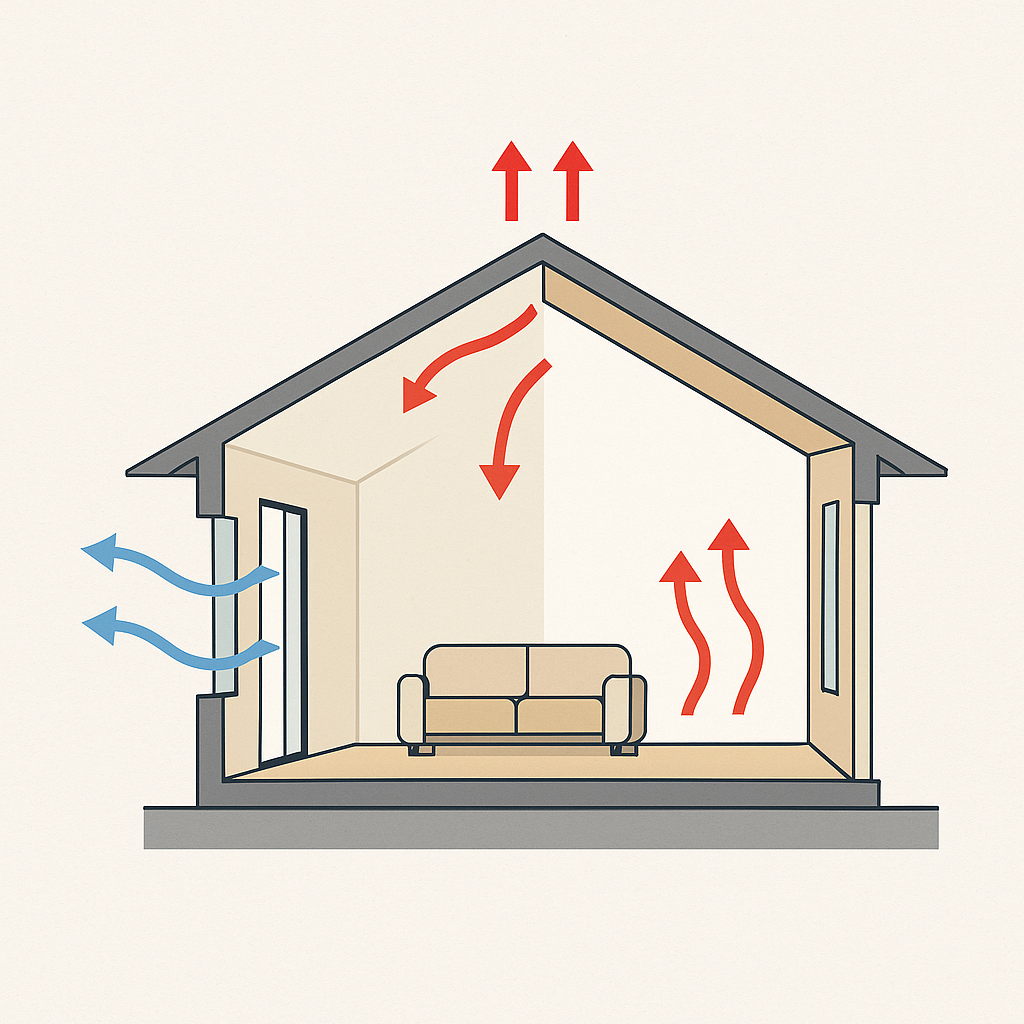If you’ve ever walked into a space and thought “this just feels right”, chances are interior architecture had something to do with it. Interior architecture is about more than picking furniture or paint colours. It’s the discipline that shapes how we experience a space how light moves through a room, how people flow from one area to another, and how materials create mood and atmosphere. Think of it as the bridge between traditional architecture and interior design.
While an architect focuses on the building as a whole, and an interior designer might style the finishes, an interior architect looks at what happens in between. They ask questions like: Does the layout make sense? Is there enough natural light? How can this old building be adapted for modern use? It’s a mix of creativity and problem-solving that transforms empty shells into places people actually want to spend time in.
.jpg)
One of the most important parts of interior architecture is functionality. A beautiful space isn’t much use if it’s uncomfortable to work in or hard to navigate. That’s why interior architects pay close attention to details like circulation, acoustics, and accessibility all the things that make a space practical as well as visually striking.
Sustainability is also playing a bigger role. Today, interior architects are designing with energy efficiency, natural ventilation, and eco-friendly materials in mind. The goal is to create spaces that don’t just look good on day one but continue to perform well for years to come.
At its heart, interior architecture is about connection: connecting people to spaces that work for them. From a restaurant that feels intimate yet efficient, to an office that boosts collaboration, or a home that perfectly reflects a lifestyle interior architecture is what makes it all possible.

If you’ve ever planned a new build or renovation, you’ve probably come across the terms interior design and interior architecture. They sound similar, but they play very different roles in shaping a space. Understanding the difference can help you choose the right professional for your project.
Interior architecture focuses on the bones of a space. It’s about structure, layout, and functionality. An interior architect looks at how rooms connect, where walls should go, how natural light enters, and how a building can be adapted to meet modern needs. They might be involved in reconfiguring floorplans, ensuring accessibility, or working with engineers to integrate sustainable systems like natural ventilation or energy-efficient lighting. In short, interior architecture is design at the structural level it blends creativity with technical problem-solving to create spaces that truly work.
Interior design, on the other hand, is about the look and feel of those spaces once the structure is set. Designers choose colour palettes, materials, furniture, lighting fixtures, and finishes. They’re responsible for the mood and style of a room whether that’s a warm, earthy café with textured walls or a sleek, modern office with clean lines and neutral tones. Interior designers bring personality and atmosphere to a space, making it both functional and visually compelling.

Think of it this way: if interior architecture sets the stage, interior design is the performance. Both are essential, but they operate at different layers of a project.
For many builds, the best results come when architects and designers collaborate. The architect ensures the space is structurally efficient and functional, while the designer ensures it feels inspiring, comfortable, and true to the client’s vision. Together, they bridge the gap between technical planning and human experience.
So, whether you’re opening a restaurant, planning an office, or renovating your home, knowing the difference between interior design and interior architecture can help you bring the right team on board and ultimately, create a space that balances form, function, and atmosphere.
Interior architecture is evolving quickly, with new priorities shaping how we live, work, and connect in built environments. From Brisbane to the global stage, 2025 is seeing strong shifts toward wellness, sustainability, and design that adapts to modern life.
One of the biggest movements is biophilic design, which integrates nature into everyday spaces. Think large windows that flood rooms with light, indoor greenery, or layouts that frame views of the outdoors. More than a design choice, it’s about boosting wellbeing and creating calming, restorative environments.

Hand in hand with this is a focus on wellness and comfort. Clients are demanding more than just visual appeal they want spaces that feel healthy and perform well. That means better airflow, acoustic comfort, non-toxic materials, and interiors that balance light, warmth, and privacy.
Sustainability continues to be a driving force, with architects choosing eco-conscious materials like reclaimed timber, low-impact stone, and finishes designed to last. Passive design principles such as orientation, natural ventilation, and energy-efficient lighting are being built into projects from the ground up.
Another trend on the rise is flexibility. Interiors are no longer designed with one fixed purpose. Multi-functional layouts, modular furniture, and sliding partitions are giving people the freedom to adapt spaces as their needs change, whether it’s working from home, entertaining, or finding a quiet retreat.
Aesthetically, warm minimalism is redefining how spaces look and feel. Clean lines remain, but they’re softened with tactile finishes like timber, stone, and plaster. Earthy palettes, textured details, and layered lighting are creating interiors that are both minimal and inviting. Alongside this, bold accents are returning colourful cabinetry, fluted surfaces, and custom furniture pieces that serve as statement elements.
.jpg)
Finally, technology is being integrated in subtle, seamless ways. Smart lighting, climate control, and hidden wiring allow homes and offices to stay connected without compromising the overall aesthetic.
Together, these trends reflect a broader shift: people want spaces that balance beauty, function, and wellbeing. Interior architecture is no longer just about how a place looks it’s about how it works and how it makes us feel.